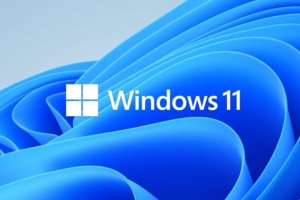Prepare for Windows 10 End of Life and Windows 11
 A Guide: From Windows 10 End of Life to Windows 11
A Guide: From Windows 10 End of Life to Windows 11
Support for Windows 10 ends on October 14, 2025. After this date, Microsoft will no longer provide:
- Free software updates, including updated or new features
- Security patches and fixes
- Technical assistance
Although you can continue to use Windows 10, doing so dramatically increases your risks of cyberattacks, security breaches, and other issues.
Know Your Windows 10 Options
Microsoft recommends that you upgrade all systems to Windows 11 before the deadline. While we generally agree, we understand that challenges such as software dependencies and costs may complicate this transition. Your current software may not function properly on Windows 11, and older PCs or laptops might not meet its requirements, potentially leading to significant expenses for hardware replacement.
You will need to assess whether your devices can run Windows 11 as-is or with upgrades. If they cannot, there are alternatives to purchasing new devices.
Microsoft recommends that you upgrade all systems to Windows 11 before the deadline. While we generally agree, we understand that challenges such as software dependencies and costs may complicate this transition. Your current software may not function properly on Windows 11, and older PCs or laptops might not meet its requirements, potentially leading to significant expenses for hardware replacement.
You will need to assess whether your devices can run Windows 11 as-is or with upgrades. If they cannot, there are alternatives to purchasing new devices.
- Extended Security Updates (ESU): Microsoft will offer an ESU subscription providing critical security updates for Windows 10. While pricing details are not yet available, ESU programs for Windows 7 were more than $100 per device annually. We expect the ESU program for Windows 10 will be more expensive.
- Virtual Desktop Services: You can also mitigate the cost of upgrading by moving to virtual desktop services. This option is best if you are facing multiple system replacements.
Determining the right path forward depends on your unique IT environment, budget, and business needs.
Plan for Windows 11
Regardless of the strategy you choose, proactive planning is crucial. Follow these steps to ensure a smooth transition to Windows 11:
- Assess Your Current IT Environment:
- Review your inventory of all devices running Windows 10. This includes computers, laptops, servers, and any embedded systems.
- Identify which devices can run Windows 11, which can be upgraded, and which devices you should replace.
- Identify the business-critical applications and tools you currently use and whether they are compatible with Windows 11. You may need to upgrade some of your software.
- Create Your Budget:
- Budget the cost of upgrading and/or replacing devices that cannot run Windows 11. Keep in mind that older systems may require replacement soon, even if upgraded now.
- Include the cost of any tech support or professional services you may need to transfer applications and data to the new devices.
- Develop a Transition Plan:
- Plan on the timing for upgrades, purchases, and migrations.
- Remember that you may need to test some of your software on Windows 11 before upgrading or replacing devices.
- Train Your Team:
- Provide learning resources to help your team learn and become familiar with Windows 11.
- If you need to upgrade any of your business software, consider providing training on new features and capabilities.
- Stay Informed:
- Monitor Microsoft’s official updates and announcements to ensure you have the latest information about Windows 10 end of life.
Your Next Step
As with any major operating system upgrade, we expect demand for PCs and laptops to increase during 2025. Prices will likely increase and availability may become an issue. Plan now and execute soon.
For assistance, schedule a brief, free call with one of our Cloud Advisors to discuss your assessment, plan, and upgrade needs, priorities, and budget.
About the Author
 Allen Falcon is the co-founder and CEO of Cumulus Global. Allen co-founded Cumulus Global in 2006 to offer small businesses enterprise-grade email security and compliance using emerging cloud solutions. He has led the company’s growth into a managed cloud service provider with over 1,000 customers throughout North America. Starting his first business at age 12, Allen is a serial entrepreneur. He has launched strategic IT consulting, software, and service companies. An advocate for small and midsize businesses, Allen served on the board of the former Smaller Business Association of New England, local economic development committees, and industry advisory boards.
Allen Falcon is the co-founder and CEO of Cumulus Global. Allen co-founded Cumulus Global in 2006 to offer small businesses enterprise-grade email security and compliance using emerging cloud solutions. He has led the company’s growth into a managed cloud service provider with over 1,000 customers throughout North America. Starting his first business at age 12, Allen is a serial entrepreneur. He has launched strategic IT consulting, software, and service companies. An advocate for small and midsize businesses, Allen served on the board of the former Smaller Business Association of New England, local economic development committees, and industry advisory boards.


 One of the scourges of technology for small and mid-size businesses, is how compatible technologies and systems often become incompatible over time. As IT professionals and business owners, we have all seen this happen. An operating system update “breaks” your backup software, which you upgrade only to find out your older tape drive is no longer supported.
One of the scourges of technology for small and mid-size businesses, is how compatible technologies and systems often become incompatible over time. As IT professionals and business owners, we have all seen this happen. An operating system update “breaks” your backup software, which you upgrade only to find out your older tape drive is no longer supported.